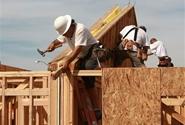Economy

April ABI Falls 3 Points
Written by Sandy Williams
May 20, 2015
Architecture billings took a sharp dive in April. The Architecture Billings Index dropped for the second time this year to a score of 48.8 from 51.7 in March, indicating a decrease in design services. (A score above 50 indicates an increase in billings).
The new projects inquiry index was 60.1 up from 58.2 the previous month. The design contracts index was at 53.1.
“The fundamentals in the design and construction industry remain very healthy,” said AIA Chief Economist Kermit Baker, Hon. AIA, PhD. “The fact that both inquires for new projects and new design contracts continued to accelerate at a healthy pace in April points to strong underlying demand for design activity. However, April would typically be a month where these projects would be in full swing, but a severe winter in many parts of the Northeast and Midwest has apparently delayed progress on projects.”
The regional averages were: South (55.8), West (52.9), Midwest (49.9), and Northeast (43.2).
By sector the breakdown was: institutional (51.8), mixed practice (51.8), multi-family residential (49.0), and commercial/industrial (48.9).
The ABI, published monthly by the American Institute of Architects, reflects the nine to twelve month lead time between architecture billings and construction spending. The regional and sector categories are calculated as a 3-month moving average, whereas the national index, design contracts and inquiries are monthly numbers.
A history of the American Institute of Architects Billings and Inquiries Indexes can be found on here on our website.

Sandy Williams
Read more from Sandy WilliamsLatest in Economy

Architecture billings continue to slide in March
Architecture firms said billings continued to decline in March, according to the latest Architecture Billings Index (ABI) released by the American Institute of Architects (AIA) and Deltek.

Beige Book shows concerns about trade policy
Manufacturing was mixed, but two-thirds of districts said activity was little changed or had declined.

New York state manufacturing index drops again in April
Firms were pessimistic, with the future general business conditions index falling to its second lowest reading in the more than 20-year history of the survey

Construction adds 13,000 jobs in March
The construction sector added 13,000 jobs, seasonally adjusted, in March, but tariffs could undermine the industry.

Supply chains, end-users brace for impact from tariffs
Supply chains are working through what the tariffs mean for them
